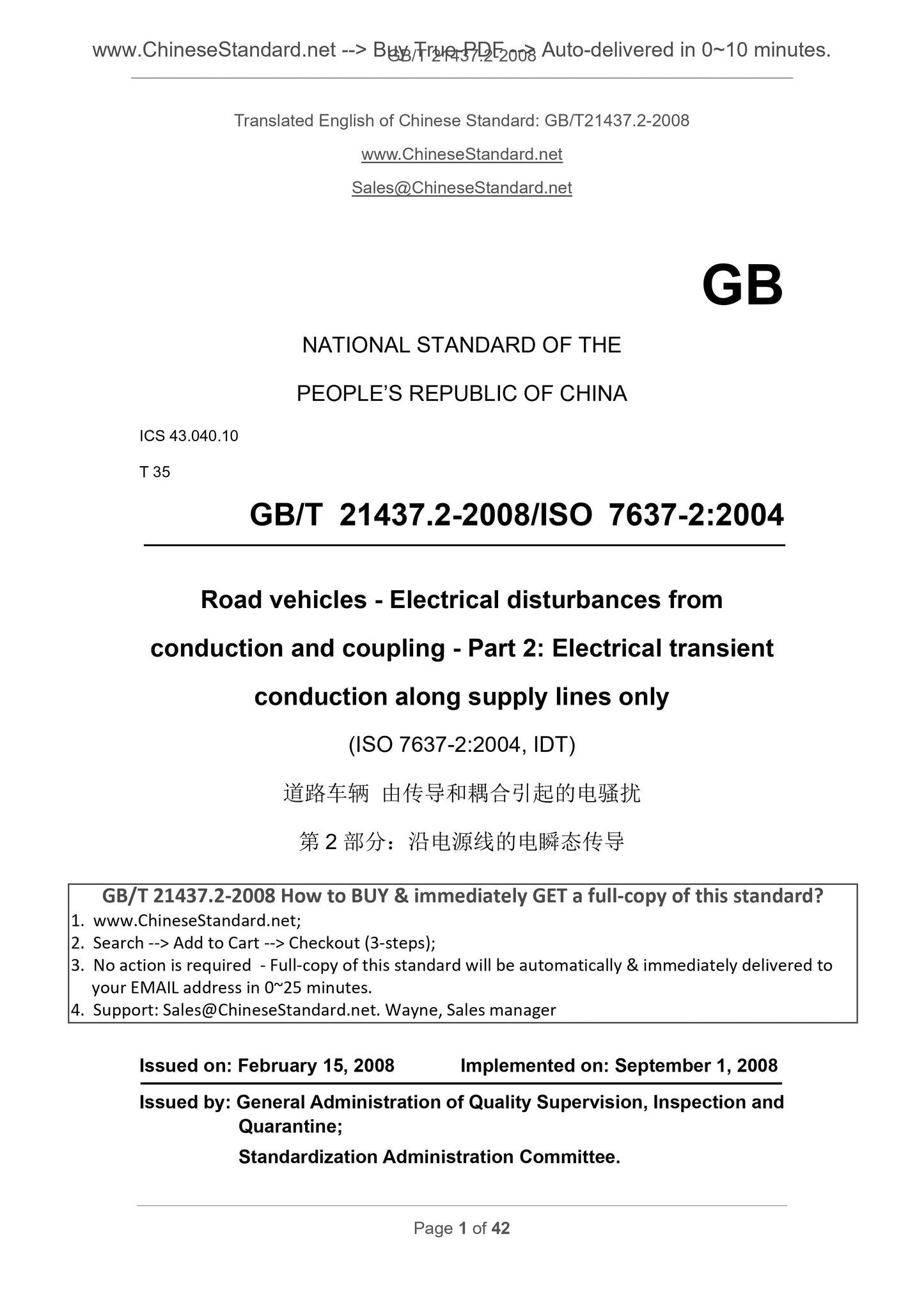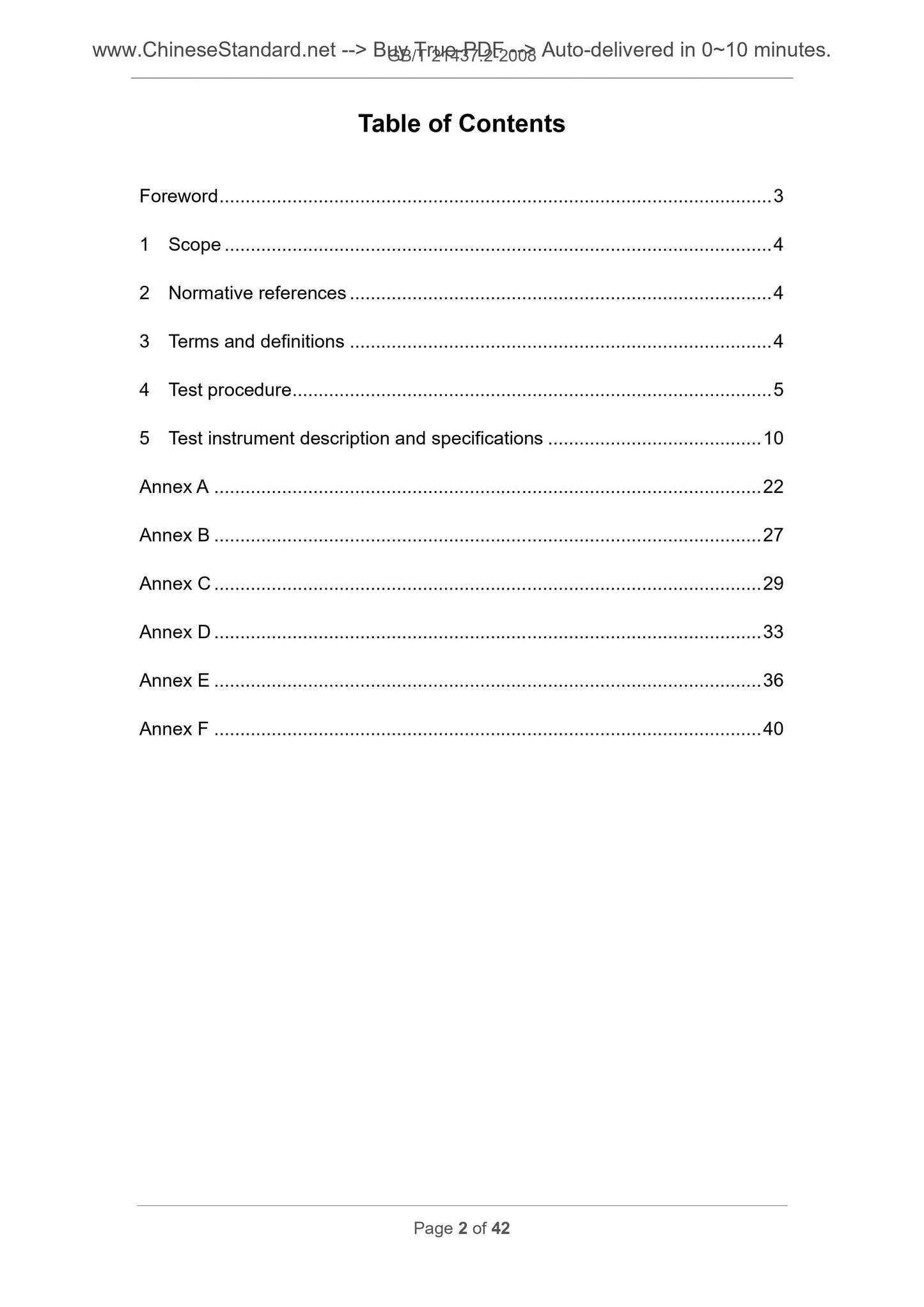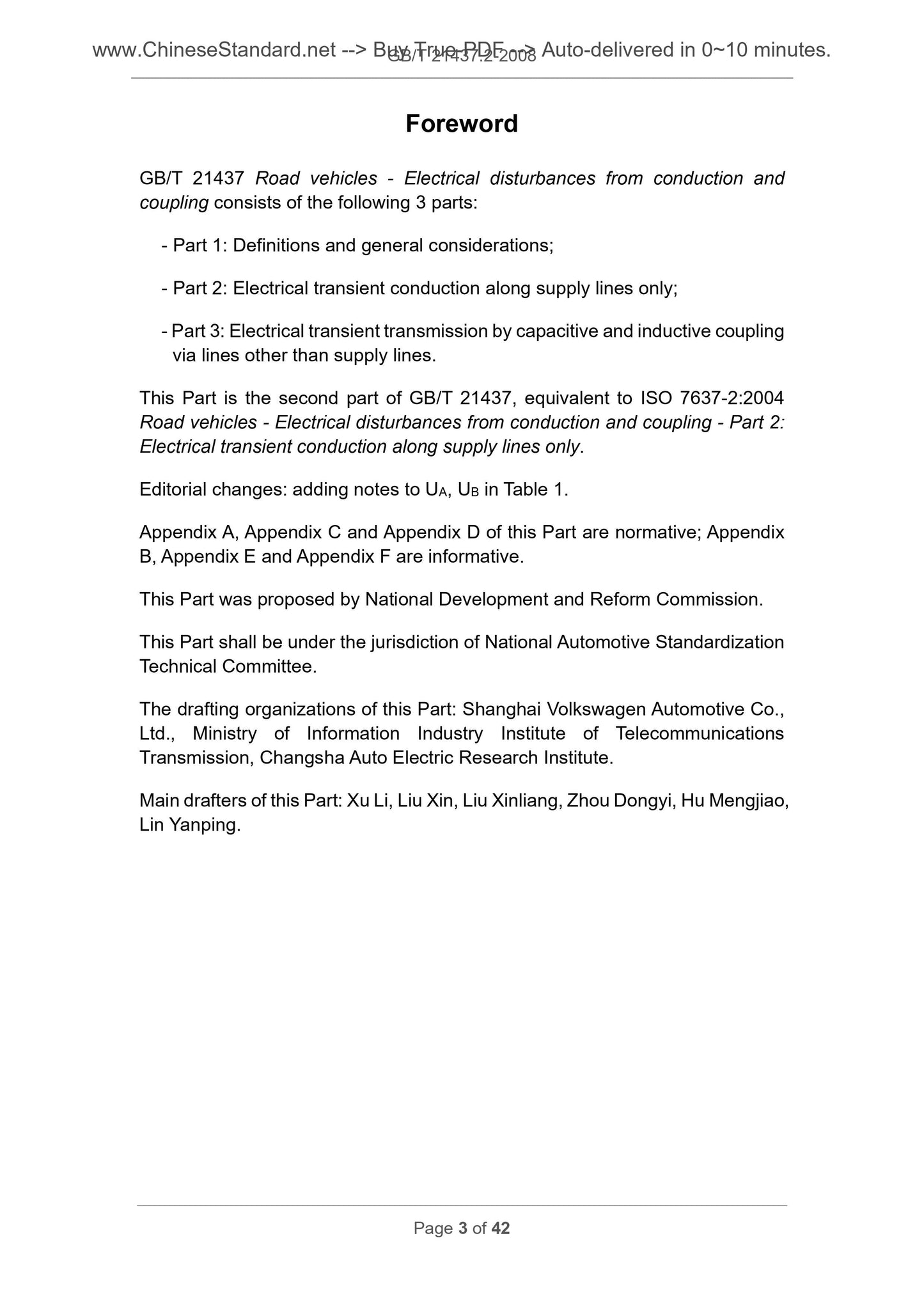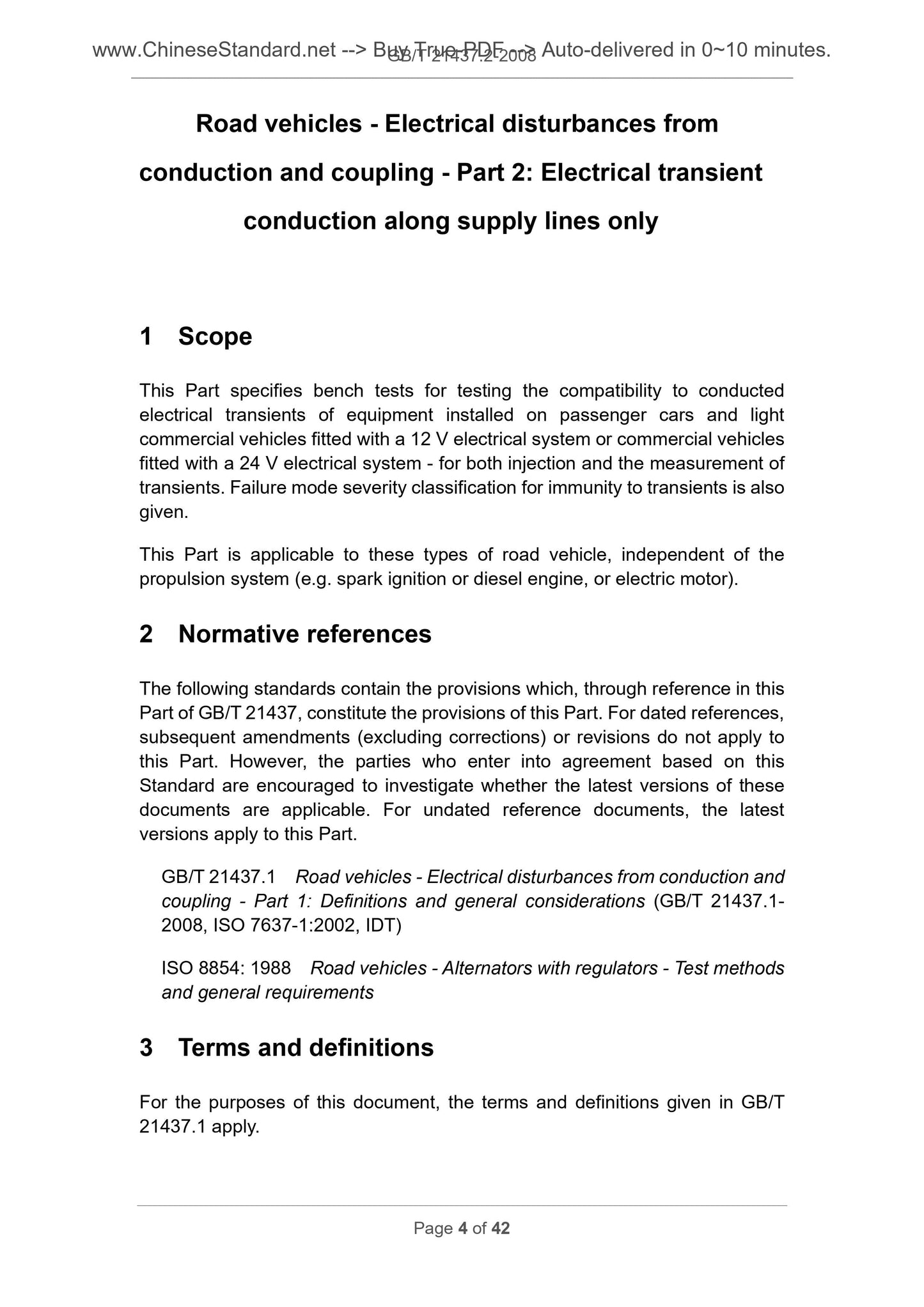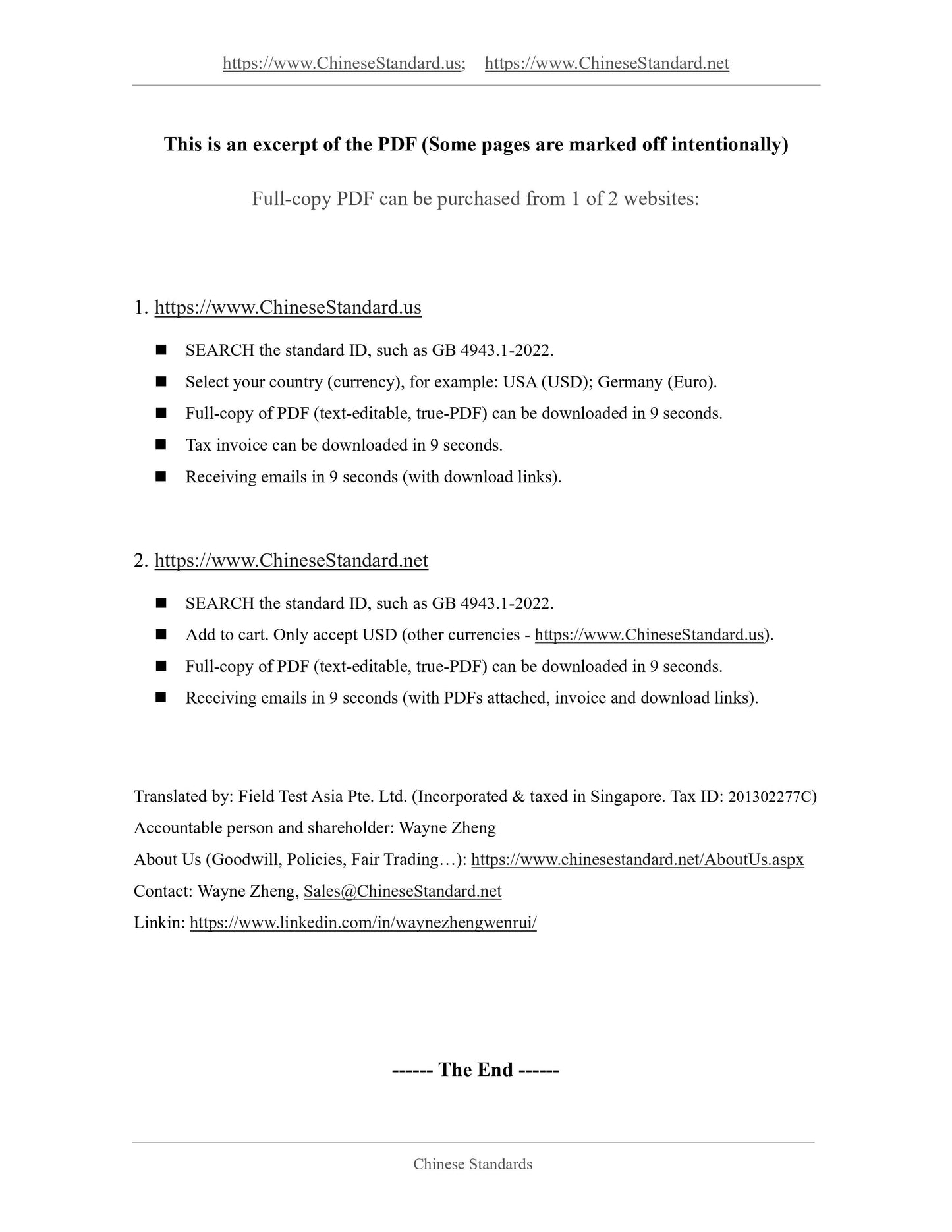1
/
of
5
PayPal, credit cards. Download editable-PDF and invoice in 1 second!
GB/T 21437.2-2008 English PDF (GB/T21437.2-2008)
GB/T 21437.2-2008 English PDF (GB/T21437.2-2008)
Regular price
$145.00
Regular price
Sale price
$145.00
Unit price
/
per
Shipping calculated at checkout.
Couldn't load pickup availability
GB/T 21437.2-2008: Road vehicles -- Electrical disturbances from conduction and coupling -- Part 2: Electrical transient conduction along supply lines only
Delivery: 9 seconds. Download (and Email) true-PDF + Invoice.Get Quotation: Click GB/T 21437.2-2008 (Self-service in 1-minute)
Newer / historical versions: GB/T 21437.2-2008
Preview True-PDF
Scope
This section specifies the transmission of equipment on commercial vehicles installed in light commercial vehicles or 24V electrical systems for passenger cars and 12V electrical systems.Bench tests for conducting transient electromagnetic compatibility tests include transient injection and measurement. This section also specifies the transient immunity failure mode
Severity classification.
This section applies to road vehicles of various power systems (such as spark ignition engines or diesel engines, or motors).
Basic Data
| Standard ID | GB/T 21437.2-2008 (GB/T21437.2-2008) |
| Description (Translated English) | Road vehicles -- Electrical disturbances from conduction and coupling -- Part 2: Electrical transient conduction along supply lines only |
| Sector / Industry | National Standard (Recommended) |
| Classification of Chinese Standard | T35 |
| Classification of International Standard | 43.040.10 |
| Word Count Estimation | 32,328 |
| Date of Issue | 2008-02-15 |
| Date of Implementation | 2008-09-01 |
| Quoted Standard | GB/T 21437.1; ISO 8854-1988 |
| Adopted Standard | ISO 7637-2-2004, IDT |
| Regulation (derived from) | Announcement of Newly Approved National Standards No. 2, 2008 (No. 115 overall) |
| Issuing agency(ies) | General Administration of Quality Supervision, Inspection and Quarantine of the People's Republic of China, Standardization Administration of the People's Republic of China |
| Summary | This standard specifies the installed electrical systems in passenger cars and light commercial vehicles with 12V or 24V electrical system of commercial electric conduction device on the bench transient electromagnetic compatibility testing, including transient injection and measurement. This section also specifies the failure mode transient immunity severity classification. This section applies to a variety of dynamical systems of road vehicles. |
Share
